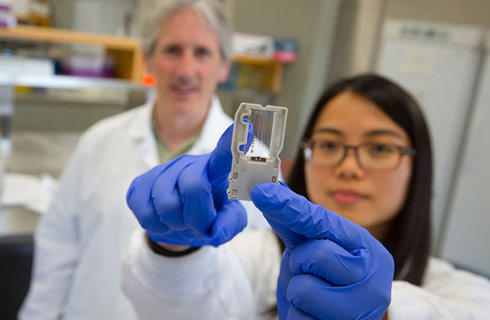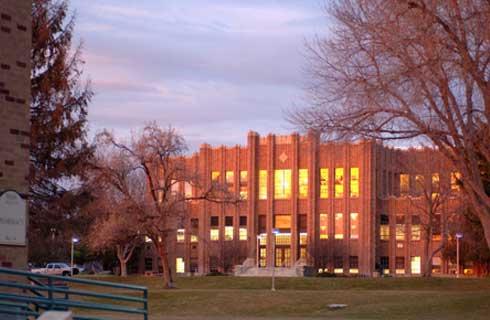天体物理学博士学位
Doctor of Philosophy in Astrophysics

学历文凭
Ph.D.

专业院系
Department of Physics

开学时间

课程时长

课程学费

国际学生入学条件
A bachelor's degree (or higher) or the equivalent from an accredited, government-recognized university. These degrees are generally four-year-long programs.
B average or higher from your undergraduate study (3.0/4.0 GPA, or equivalent).
3 letters of recommendation.
A personal statement.
Official transcripts for all post-secondary coursework completed.
Transcripts reflecting all undergraduate and/or post-baccalaureate study from each international and U.S. college/university. Departments can begin the review of an application with uploaded unofficial transctips. If offered admission, you will be required to supply official transcripts. Official transcripts are those that come directly to MSU from the previously attended university. If needed, you may need to supply an English translation and transcription to US standards.
Internet-based TOEFL Test (iBT) 80
Paper-based TOEFL Test (PBT) 550
IELTS 6.5
Duolingo - 120
MSU reserves the right to question the evaluation of all non-U.S. academic credentials/transcripts. We recommend using an accredited translation/transcription company.
Three (3) Year Bachelor's Degrees: MSU accepts a three year Bachelor's degree from applicants. You are welcome to submit an application which will be reviewed by the department to determine whether you are a strong enough candidate to be admitted. If admitted, you may be asked to take some undergraduate courses at the start of your graduate degree at MSU to strengthen your background
IDP—雅思考试联合主办方

雅思考试总分
6.5
了解更多
雅思考试指南
- 雅思总分:6.5
- 托福网考总分:80
- 托福笔试总分:550
- 其他语言考试:Duolingo - 120
CRICOS代码:
申请截止日期: 请与IDP顾问联系以获取详细信息。
课程简介
The Astronomy and Astrophysics Group is active in observations and theory of supermassive black holes and accretion dynamics, stellar-mass black holes, and neutron stars. Neutron stars contain the densest known matter in the Universe and the strongest magnetic fields, a cubic centimeter of neutron-star matter has a mass of one hundred million metric tons, while magnetic fields are as large as 1015 G (1011 T). The Astronomy and Astrophysics Group studies neutron-star rotational dynamics, thermal evolution, and explosive phenomena to deduce the properties and dynamics of the stellar interior. Essentially every massive galaxy, including our own Milky Way, harbors a supermassive black hole at its center. These giant black holes can grow to have masses more than a billion times the mass of our Sun. Super star clusters are the product of the most intense bursts of star formation star formations in the local Universe. Galaxies form and grow hierarchically over cosmic time. Small galaxies formed first in the early Universe and through continual mergers built up larger galaxies like our own Milky Way.
相关申请
 预科
预科 奖学金
奖学金 实习机会
实习机会 在校学习
在校学习 跨境学习
跨境学习 校园授课-线上开始
校园授课-线上开始 在线/远程学习
在线/远程学习
学校排名

世界排名501
数据源:泰晤士高等教育世界大学排名
关于蒙大拿州立大学

蒙大拿州立大学(MSU)有来自世界各地70多个国家的500多名国际学生。这所历史悠久的大学始建于1893年,目前拥有1.6万多名学生。令蒙大拿州立大学引以为傲的是,该校在学术研究领域表现卓越,处于前沿地位,每年的研究经费超过1亿美元。该校是蒙大拿州最大的研究机构,其科研支出在美国院校中名列前3%。该校的教学水平也非常出色,其中部分原因在于课堂气氛亲密融洽,可最大限度地确保师生交流。蒙大拿州立大学被卡内基教学促进基金会(Carnegie Foundation for the Advancement of Teaching)划入''社会参与度分类''。这是对该校致力于教学以及教职人员广泛参与当地社会活动的表彰和认可。蒙大拿州立大学的课程、课外活动以及研究中加入了各种项目。课程还包括参与志愿服务与公众知识分享。这类项目不仅有益于学生增强社交技能,同时还能提高当地人们的整体幸福感。蒙大拿州立大学位于蒙大拿南部的城市波兹曼,是蒙大拿州最大的院校。波兹曼每年平均有300天阳光灿烂,是游览黄石国家公园自然美景和岩石景观的理想之地。2019年,蒙大拿州立大学在''对户外运动爱好者来说最经济实惠的大学''评选中名列第2位。这座小城市一年四季都有大量适合学生的活动,其中包括一年一度的甜豌豆艺术节。该校校园距离滑雪场也只有20分钟路程,人人都能在这里找到适合自己的活动。
本校相关课程

Bachelor of Science in General Sociology
学历文凭
Bachelor Degree
开学日期
课程费用总额


Bachelor of Science in Psychology
学历文凭
Bachelor Degree
开学日期
课程费用总额


Bachelor of Arts in Political Science
学历文凭
Bachelor Degree
开学日期
课程费用总额


Bachelor of Science in Physics
学历文凭
Bachelor Degree
开学日期
课程费用总额


Bachelor of Arts in Philosophy
学历文凭
Bachelor Degree
开学日期
课程费用总额


Bachelor of Arts in Modern Languages and Literatures
学历文凭
Bachelor Degree
开学日期
课程费用总额

其他相关课程

天体物理学理学学士
 卡尔加里大学
卡尔加里大学学历文凭
Bachelor Degree
开学日期
课程费用总额


天体物理学理学学士
 圣玛丽大学
圣玛丽大学学历文凭
Bachelor Degree
开学日期
课程费用总额


天文学与天体物理学博士学位
 多伦多大学
多伦多大学学历文凭
Ph.D.
开学日期
课程费用总额


荣誉物理学和天体物理学学士学位-士嘉堡
 多伦多大学
多伦多大学学历文凭
Bachelor Degree with Honours
开学日期
课程费用总额


天体物理学与天文学哲学博士
 女王大学
女王大学学历文凭
Ph.D.
开学日期
课程费用总额


天体物理学和天文学理学硕士
 女王大学
女王大学学历文凭
Masters Degree
开学日期
课程费用总额





















 美国
美国




